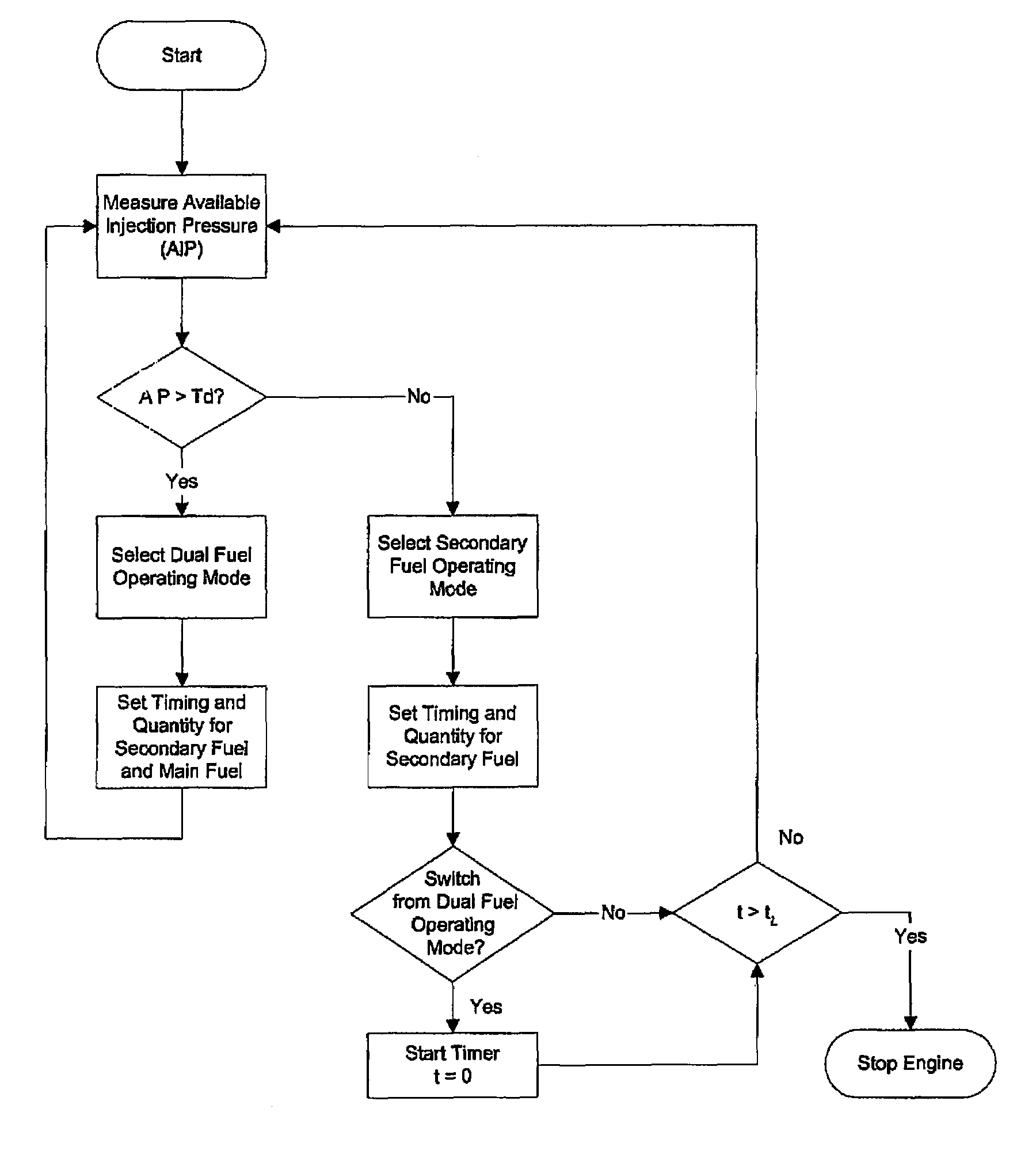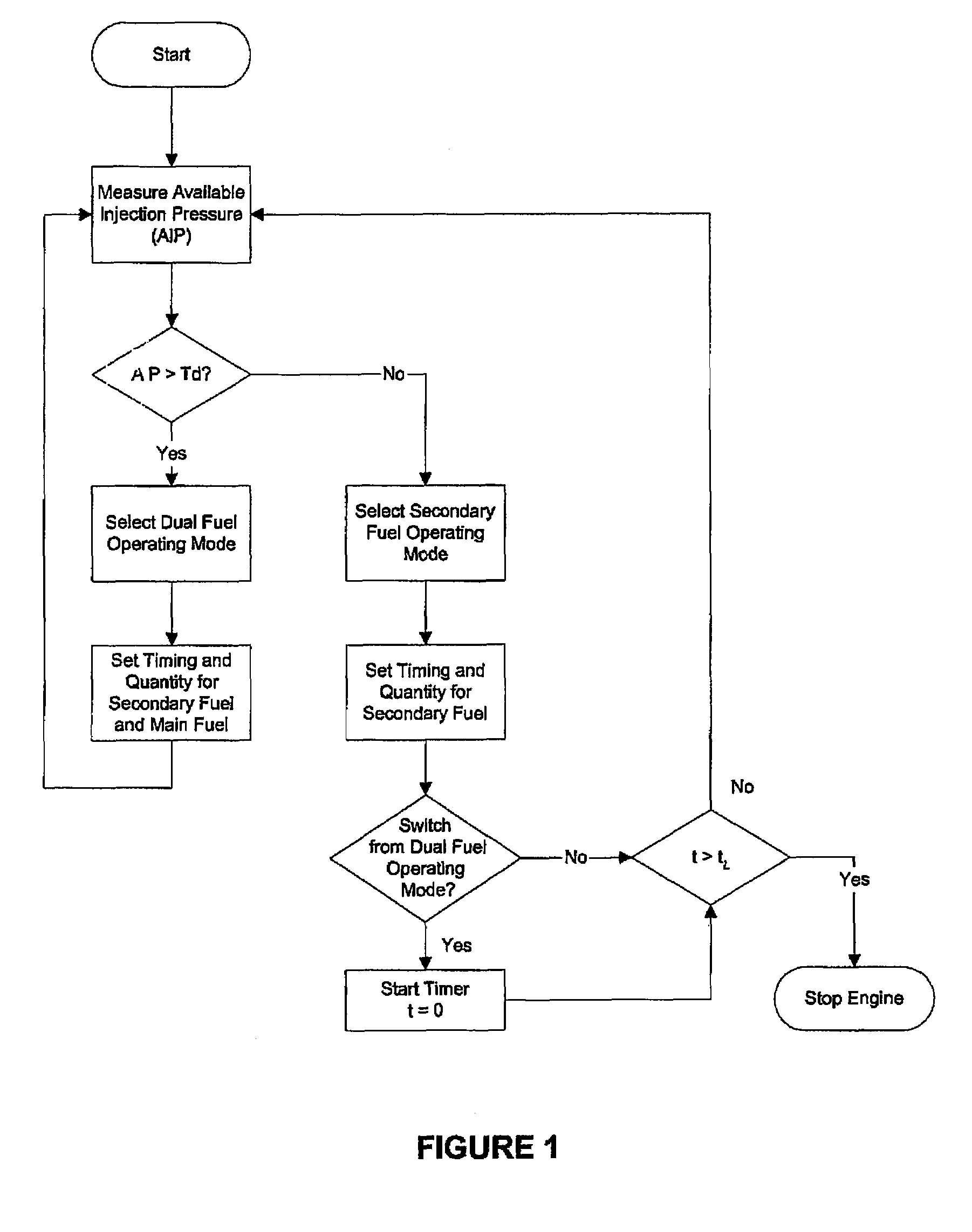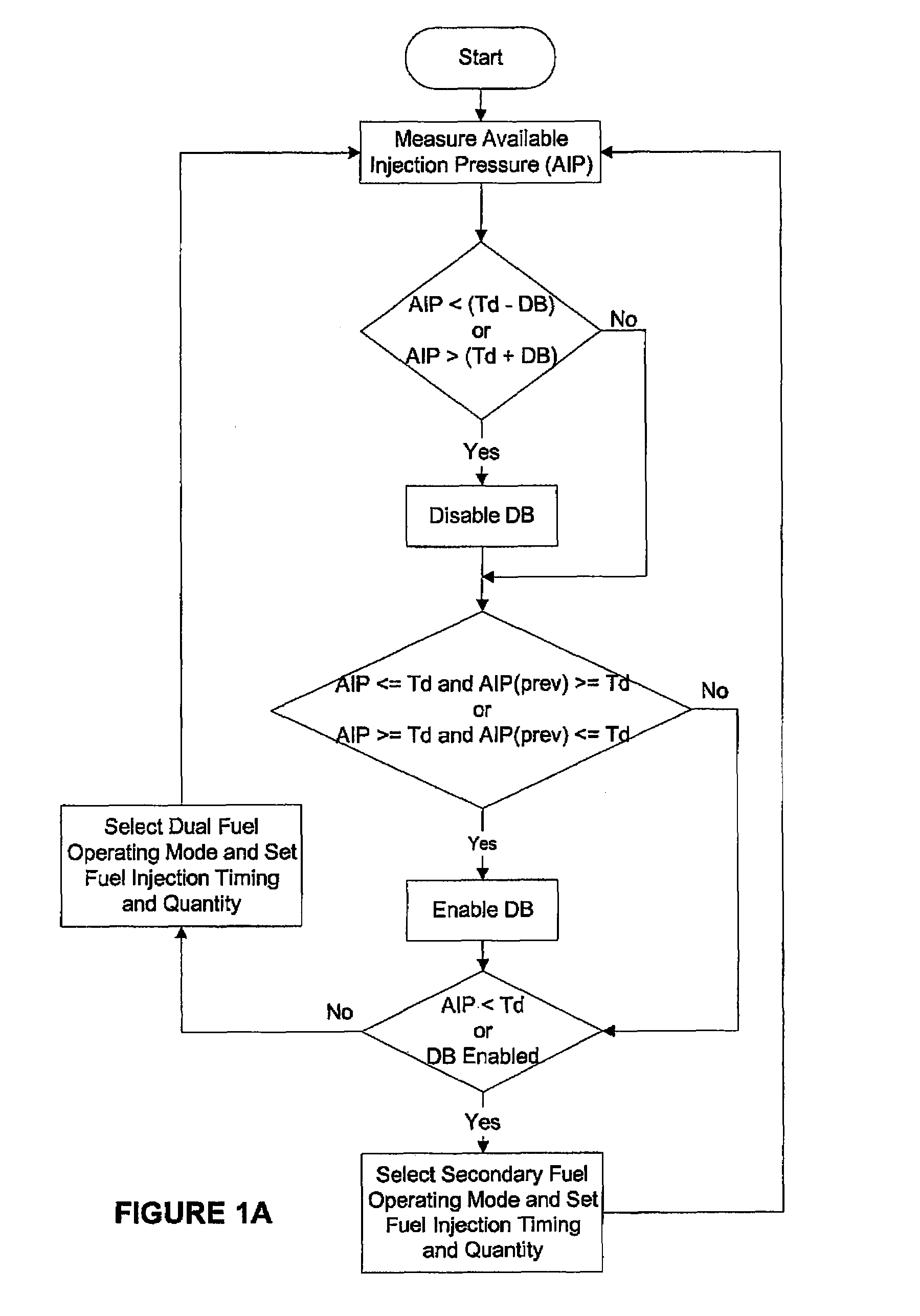Method and apparatus for operating a dual fuel internal combustion engine
a dual fuel internal combustion engine and fuel injection technology, applied in the direction of electrical control, process and machine control, instruments, etc., can solve the problems of increasing the pressure on the engine, increasing the capital cost of the engine and/or the operating cost, and increasing the amount of pollution. , to achieve the effect of reducing the time needed for pressur
- Summary
- Abstract
- Description
- Claims
- Application Information
AI Technical Summary
Benefits of technology
Problems solved by technology
Method used
Image
Examples
Embodiment Construction
)
[0036]The present method is directed to internal combustion engines that are fuelled with a main fuel and a secondary fuel wherein the two fuels can be independently and separately introduced directly into the engine's combustion chamber. In some embodiments, the secondary fuel injection valve is adapted to introduce smaller quantities of fuel on an energy basis. For such engines, a control strategy is needed to handle the situation when the main fuel is unavailable. This is especially true for engines that have secondary-fuel injection valves with a geometry that restricts secondary fuel mass flow rate to the extent that the engine is unable to operate at full power with secondary fuel alone.
[0037]In this disclosure, “secondary fuel” is a term that is used to describe a second fuel that is normally more auto-ignitable than the main fuel. Under normal operation, only a small quantity of secondary fuel is injected into the combustion chamber to assist with ignition of the main fuel....
PUM
 Login to View More
Login to View More Abstract
Description
Claims
Application Information
 Login to View More
Login to View More - R&D
- Intellectual Property
- Life Sciences
- Materials
- Tech Scout
- Unparalleled Data Quality
- Higher Quality Content
- 60% Fewer Hallucinations
Browse by: Latest US Patents, China's latest patents, Technical Efficacy Thesaurus, Application Domain, Technology Topic, Popular Technical Reports.
© 2025 PatSnap. All rights reserved.Legal|Privacy policy|Modern Slavery Act Transparency Statement|Sitemap|About US| Contact US: help@patsnap.com



